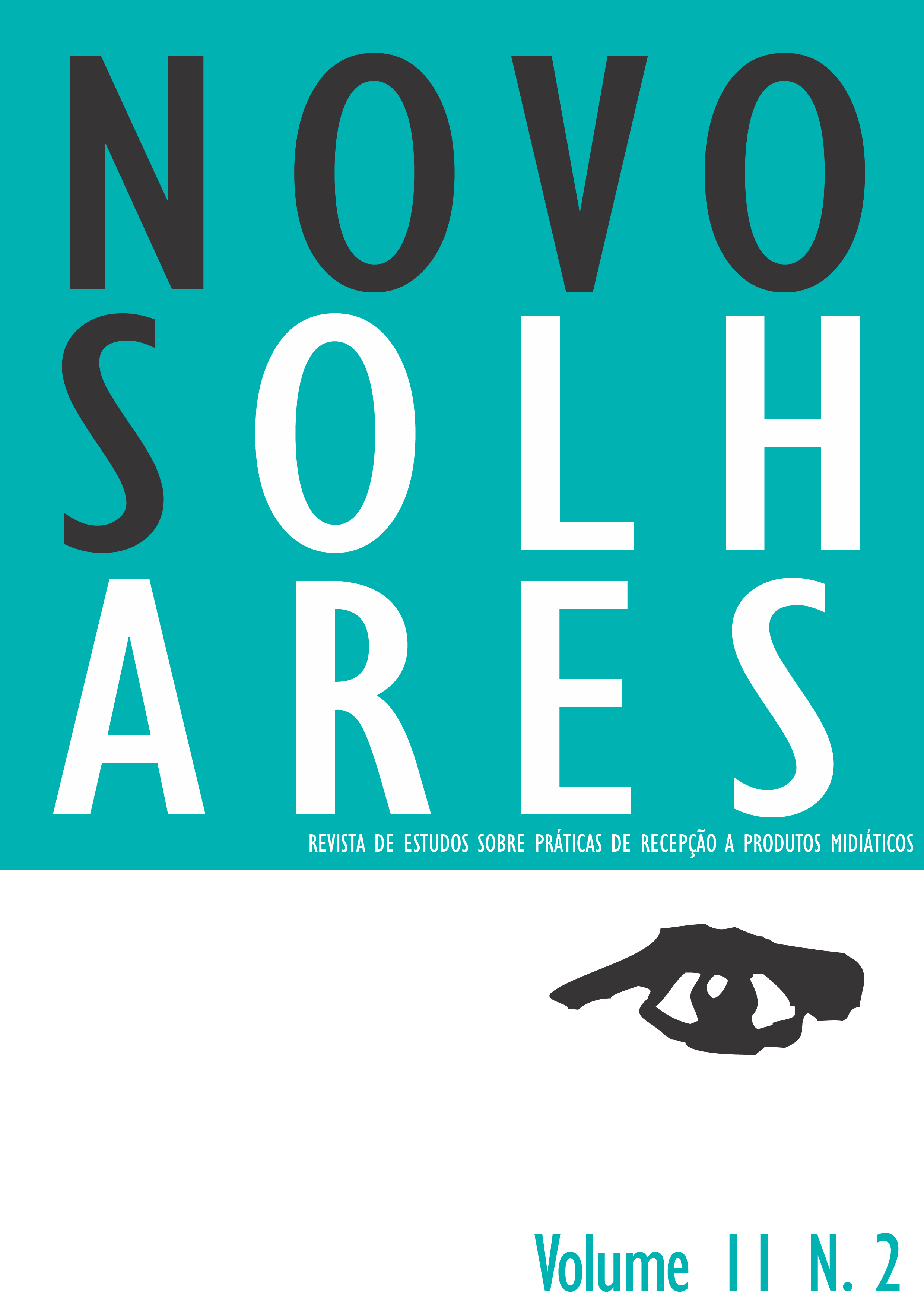Aesthetic and poetic intersections in contemporary artivism: computational, audio-visual, and generative art
DOI:
https://doi.org/10.11606/issn.2238-7714.no.2022.205276Keywords:
Multisensoriality, Synaesthesia, Activism, Media convergenceAbstract
This study aims to explore the intersections between image and sound and aesthetics and poetics in the new generative and activist digital artistic formats. For this, we analyze the creation of two audiovisual and generative computational artworks which simultaneously constitute socially intervening artworks. By studying these significant examples, this text proposes a systematic approach to analyze and create these works, including participatory aspects which are more characteristic of activism and less so of artistic creation. With this analysis, we will attempt to highlight the role different media can play in communication processes and the aesthetic (sensory) and poetic (cognitive and communicational) impacts made possible by their joint use.
Downloads
References
Aladro-Vico, E., Jivkova-Semova, D., & Bailey, O. (2018). Artivismo: Un nuevo lenguaje educativo para la acción social transformadora. Comunicar, 26(57), pp. 9-18.
Antunes, L. R. (2012). The Vestibular in Film: Orientation and Balance in Gus Van Sant’s ‘Cinema of Walking’. Essays in Philosophy, 13(2), pp. 522–549.
Antunes, L. R. (2018). Slow TV: The experiential and multisensory documentary. In Cognitive Theory and Documentary Film (pp. 205-221). Palgrave Macmillan, Cham.
Cascone, S. (2019). The Average Person Spends 27 Seconds Looking at a Work of Art. Now, 166 Museums Are Joining Forces to Ask You to Slow Down. Artenet News. encurtador.com.br/bmpIJ
Crawford, Mathew (2014). The World Beyond Your Head. Farrar, Straus and Giroux.
Davenport, T., & Beck, J. (2001). The Attention Economy: Understanding the New Currency of Business. Harvard Business School Press.
Gatto, A. (1966). La storia delle vittime: poesie della resistenza, 1943-'47 1963-'65. A. Mondadori.
Jennings, E. (2012). The collected poems: Elizabeth Jennings. Carcanet Press.
Kari, L., Rozenberg, G., & Salomaa, A. (1997). L systems. In Handbook of formal languages (pp. 253-328). Springer.
Leão, L.; Lopes, V.; Meliani, M. & Queiroz, B. (2017). Imaginários de poder e redes midiáticas: diálogos entre o Creative Time Summit e o Brasil. In Proceedings de XXVI Encontro Anual da Compós, Faculdade Cásper Líbero, São Paulo.
MacDonald, R. (2021). The social functions of music: Communication, wellbeing, art, ritual, identity and social networks (C-WARIS). In A. Creech, D. A. Hodges, & S. Hallam (Eds.), Routledge international handbook of music psychology in education and the community (pp. 5–20). Routledge/Taylor & Francis Group.
Manovich, L. (2001). The Language of New Media. MIT Press.
Muñoz, J. (2020). Residencias de mayores en Madrid: del abandono institucional al horror de la pandemia. Pressenza. encurtador.com.br/biSUZ
Reber, R., Schwarz, N., & Winkielman, P. (2004). Processing fluency and aesthetic pleasure: Is beauty in the perceiver’s processing experience? Personality and Social Psychology Review, 8(4), pp. 364-382.
Rodríguez, C. (2020). Reciben a pedradas en La Línea de la Concepción a los ancianos desalojados de la residencia de Alcalá del Valle. El Mundo. encurtador.com.br/djEMU
Rudi, J. (2011). Soundscape and listening. Soundscape in the Arts, 185-194.
Schafer, R. M. (1993). The soundscape: Our sonic environment and the tuning of the world. Simon and Schuster.
Sherman, T. (2008). Vernacular video. Video Vortex Reader. In Responses to YouTube (pp. 161-172). Institute of Network Cultures.
Siegelbaum, S. (2011). Authentic Mediation: Art, Media, and Public Space in May '68. Kunstlicht 3, pp.38–49.
Sutherland, C. A. M., Thut, G., & Romei, V. (2014). Hearing brighter: Changing in-depth visual perception through looming sounds. Cognition, 132(3), 312–323. encurtador.com.br/lPY58
Trespeuch-Berthelot, A. (2020). The Shadow Cast by the Situationist International on May ’68. In Hemmens, A. & Zacarias, G. (Eds.). The Situationist International, A Critical Handbook. Pluto Press.
Veiga, P. A. (2017). Generative theatre of totality. Journal of Science and Technology of the Arts, 9(3), 33-43. encurtador.com.br/ezBG8
Vroomen, J., & Gelder, B. D. (2000). Sound enhances visual perception: cross-modal effects of auditory organization on vision. Journal of experimental psychology: Human perception and performance, 26(5), p. 1583.
Watz, M. (2010). Closed Systems: Generative Art and Software Abstraction. In M. Watz, A. Doms, E. de Lavandeyra Schöffer (Eds) MetaDeSIGN - LAb[au] (pp. 1-3). Les Presses du Réel.
Downloads
Published
Issue
Section
License
Copyright (c) 2023 Professor

This work is licensed under a Creative Commons Attribution-NonCommercial-NoDerivatives 4.0 International License.
Proposta de Aviso de Direito Autoral Creative Commons
1. Proposta de Política para Periódicos de Acesso Livre
Autores que publicam nesta revista concordam com os seguintes termos:
- Autores mantém os direitos autorais e concedem à revista o direito de primeira publicação, com o trabalho simultaneamente licenciado sob a Licença Creative Commons Attribution CC Attribution-NonCommercial-NoDerivatives 4.0, que permite o compartilhamento do trabalho com reconhecimento da autoria e publicação inicial nesta revista.
- Autores têm autorização para assumir contratos adicionais separadamente, para distribuição não-exclusiva da versão do trabalho publicada nesta revista (ex.: publicar em repositório institucional ou como capítulo de livro), com reconhecimento de autoria e publicação inicial nesta revista.
- Autores têm permissão e são estimulados a publicar e distribuir seu trabalho online (ex.: em repositórios institucionais ou na sua página pessoal) a qualquer ponto antes ou durante o processo editorial, já que isso pode gerar alterações produtivas, bem como aumentar o impacto e a citação do trabalho publicado.



